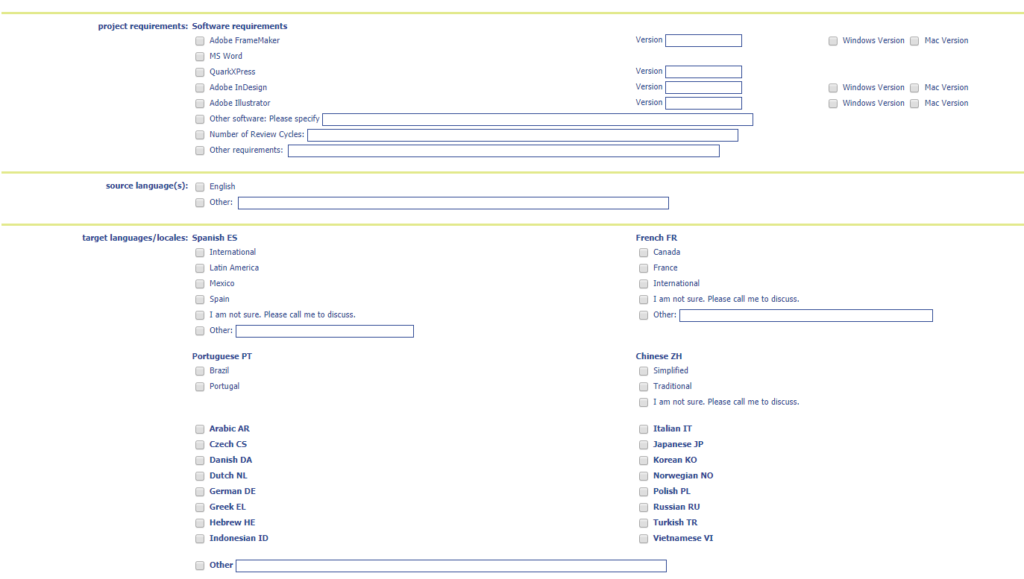Expanding business to international markets can be both exciting and challenging. But how can you take your company global?
Having a set of clear strategies along with guidance allows the entire organization to properly mitigate the risks before expanding to other markets or countries. Partnering with a language service provider is a major part of doing so and a great way to start. Look for professional translation companies with services and solutions designed to help companies explore new markets.
-
According to Hubspot, global B2C eCommerce sales are projected to reach $4.5 trillion by 2021. Companies that sell in different countries and multiple languages can reach more customers, grow faster and have higher profit margins.
-
According to Businesswire, The global market research services industry is valued at $74 billion in 2020

Marketing translation services
Marketing translation can cover many components such as automated email campaigns, websites, brochures, white papers, presentations, social media posts, etc. But before jumping into these components, companies have to take market research translation seriously and have one in place. So, how can you use market research and translation services to explore new markets? If you’re ready to explore the likely profitability of new markets, it’s time to start translating your market research.
Social media is also an excellent place to start. The instant reaction and engagement of social media can be a great test and it can be measured quickly. Additionally, it’s a good way to gain sincere feedback from users who tend to express their opinions openly. Make sure to use professional translation services to create the right tone for your posts and also listen and understand the comments of followers.
Finally, a professional localization company can help you with a market trend analysis. They can provide information about how profitable a new market might be or help you work on a multilingual research project.
Expanding business to other countries
Marketers that don’t prioritize content translation when the target audience is non-English speaking are at great disadvantage.
Having the right content made by a professional translation company will be to your advantage since they know what works or not for particular cultures and countries. They have the skills and knowledge to render translation works that appeal to the preferences and emotions of target audiences. Some companies utilize marketing text translation to reach and engage with customers who speak other languages even in their own country.
US translation companies have many ways to explore the likely profitability of different markets. A language service provider can assist you in preparing authentic marketing content to understand the culture and what will resonate with your new audience. It will play a huge role in the success of your global expansion.






























 En su historia, hasta el momento, solamente cuatro mujeres han recibido el galardón (la última en hacerlo fue Elena Poniatowska en 2013).
En su historia, hasta el momento, solamente cuatro mujeres han recibido el galardón (la última en hacerlo fue Elena Poniatowska en 2013).
 El Paraninfo de la Universidad de Alcalá de Henares (originalmente Universidad Complutense en referencia al nombre romano de la ciudad, Complutum) es la sala más emblemática del Colegio Mayor de San Ildefonso. Fue edificado por Pedro de la Cotera y su construcción se inició en 1516. El Paraninfo tiene una larga historia como lugar de acogida para la celebración de actos ilustres, tal y como señala el sitio web de la actual Universidad de Alcalá en
El Paraninfo de la Universidad de Alcalá de Henares (originalmente Universidad Complutense en referencia al nombre romano de la ciudad, Complutum) es la sala más emblemática del Colegio Mayor de San Ildefonso. Fue edificado por Pedro de la Cotera y su construcción se inició en 1516. El Paraninfo tiene una larga historia como lugar de acogida para la celebración de actos ilustres, tal y como señala el sitio web de la actual Universidad de Alcalá en 



Recent Comments